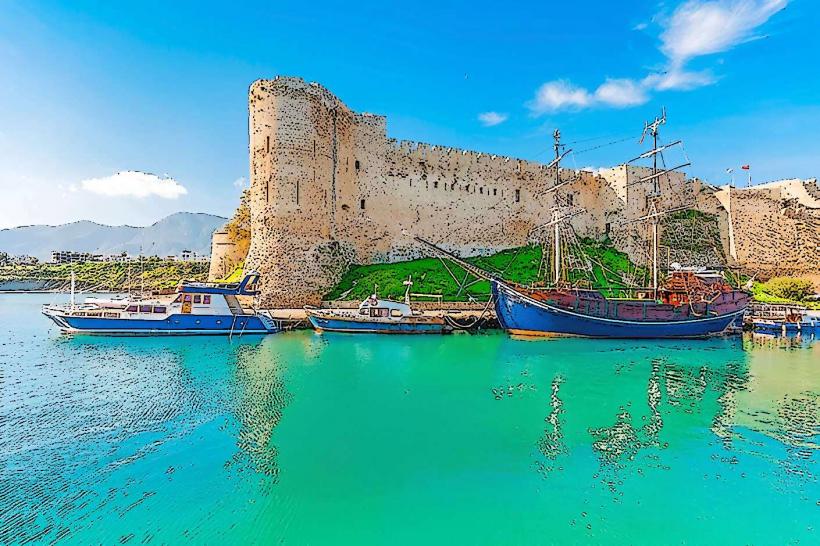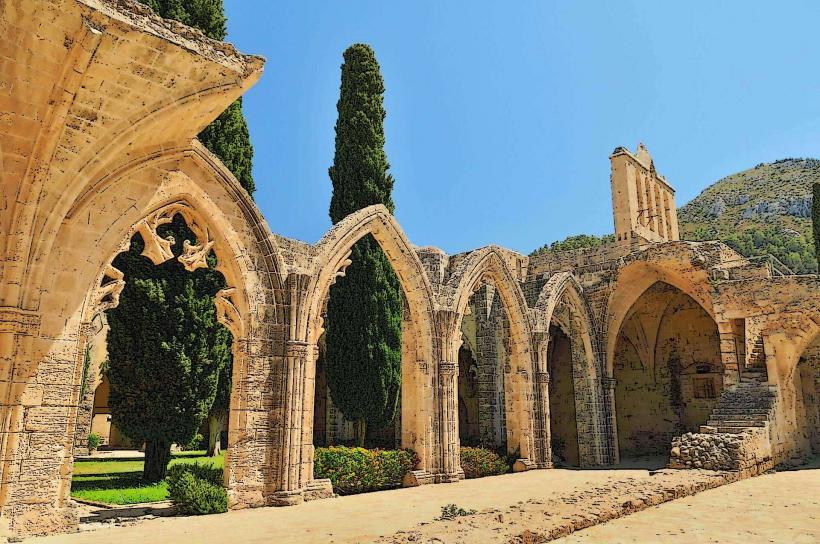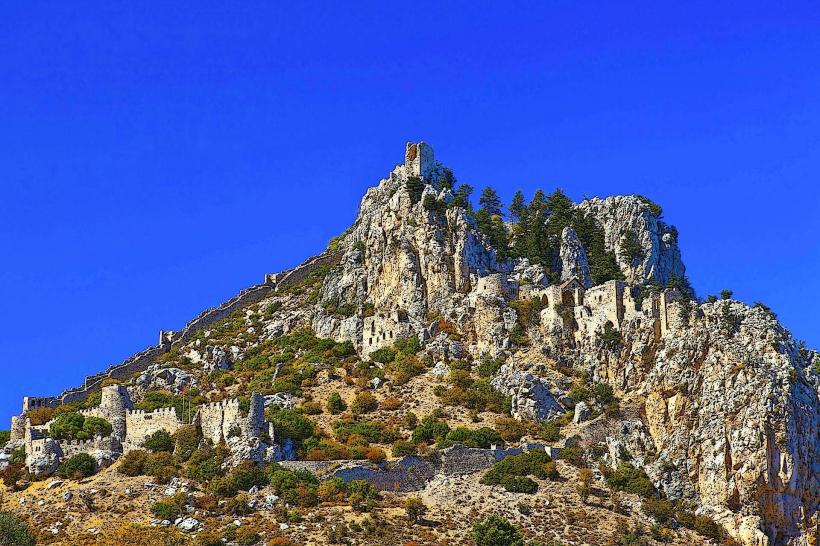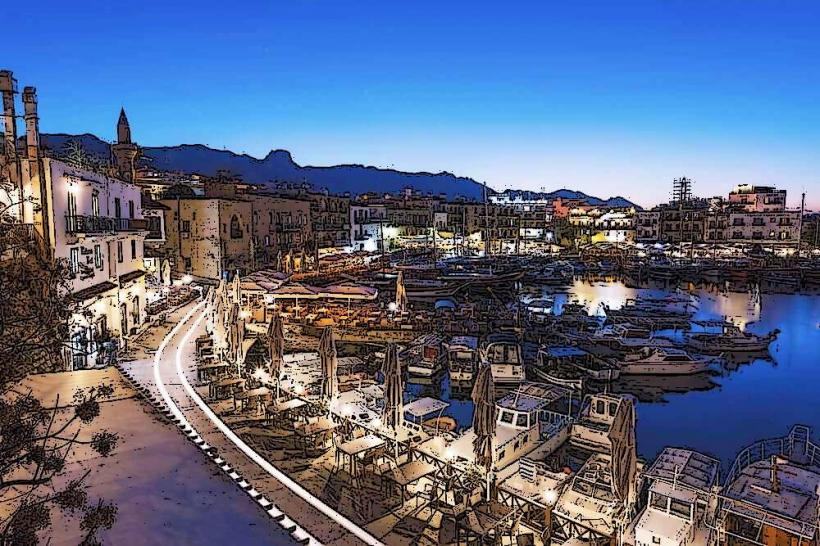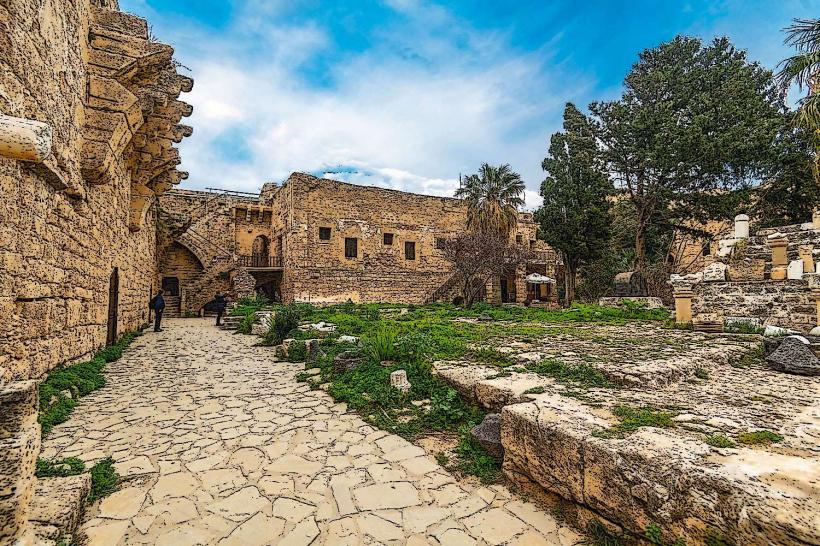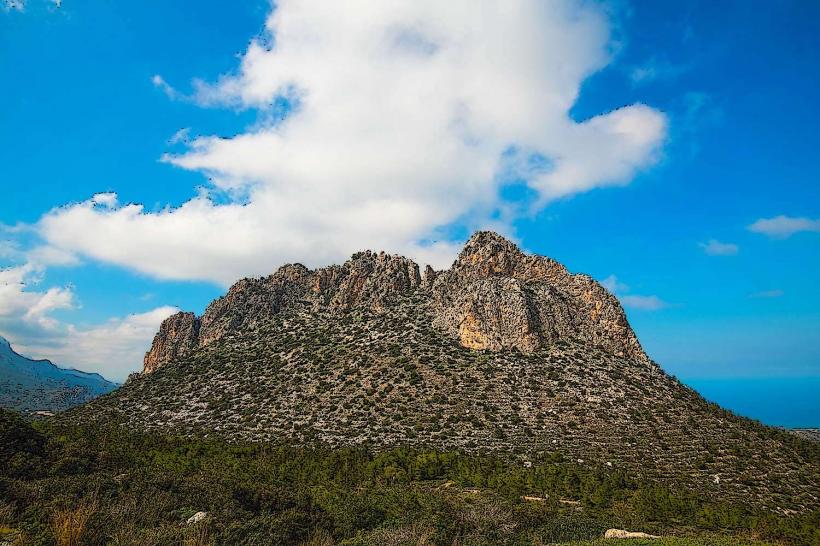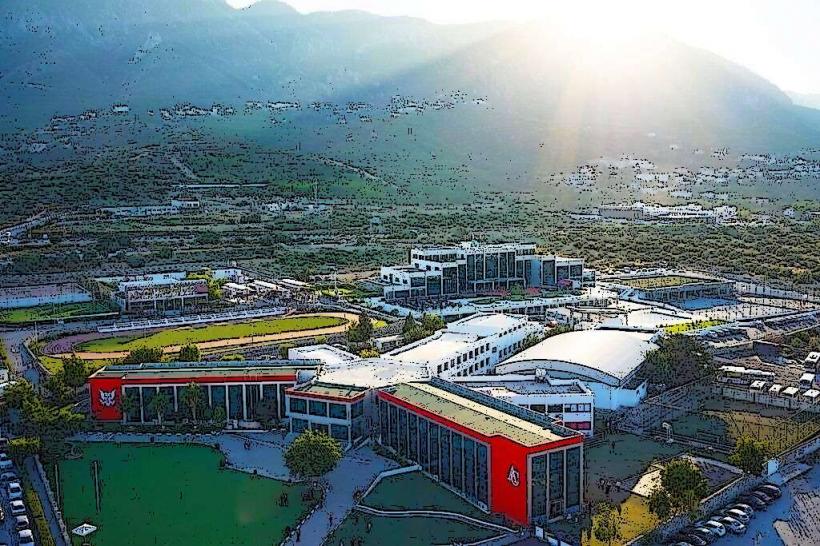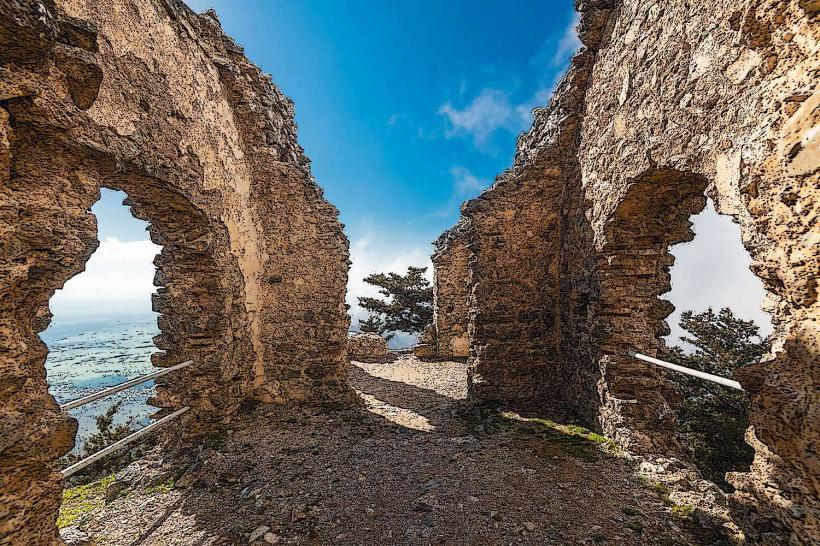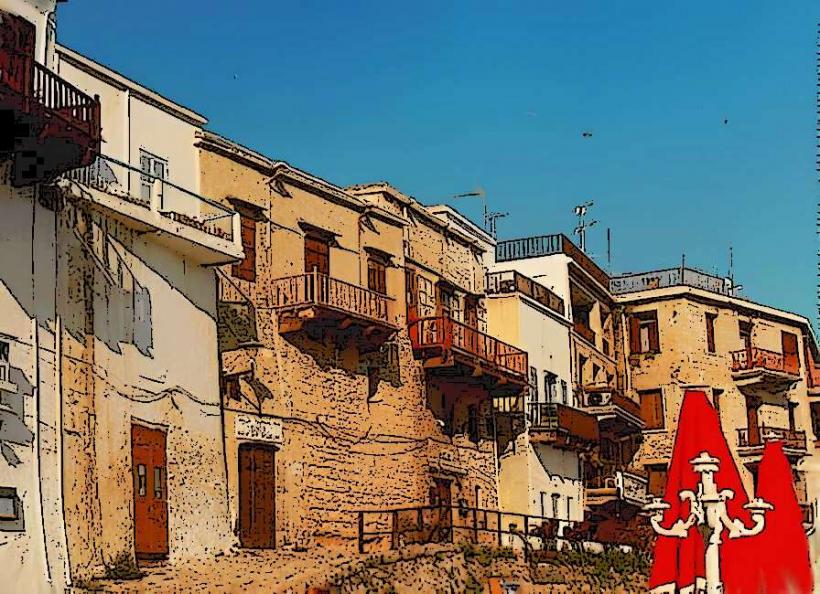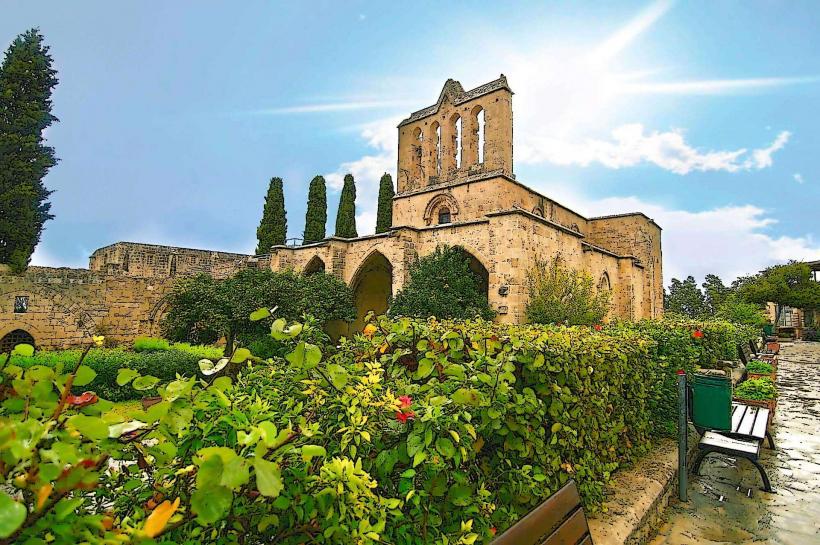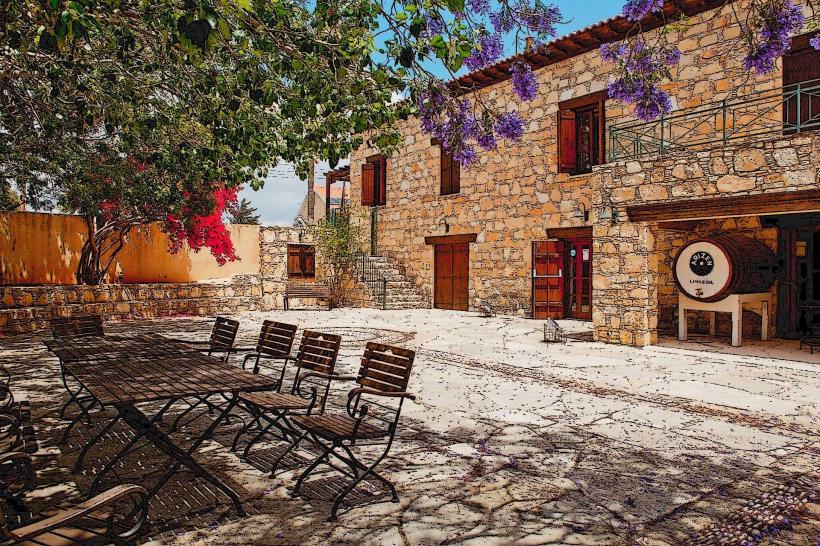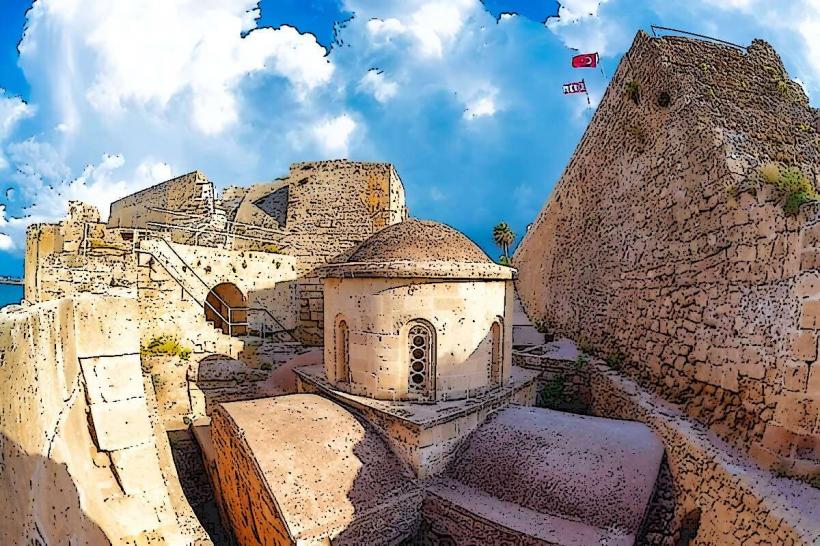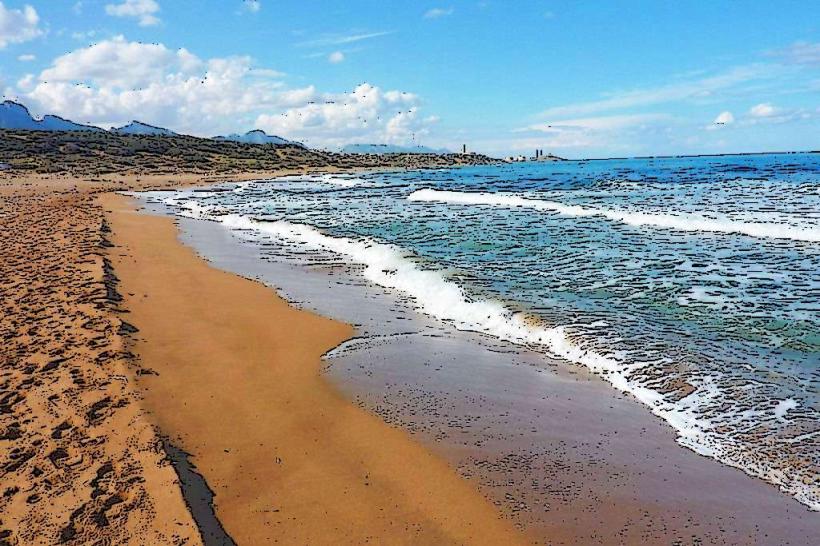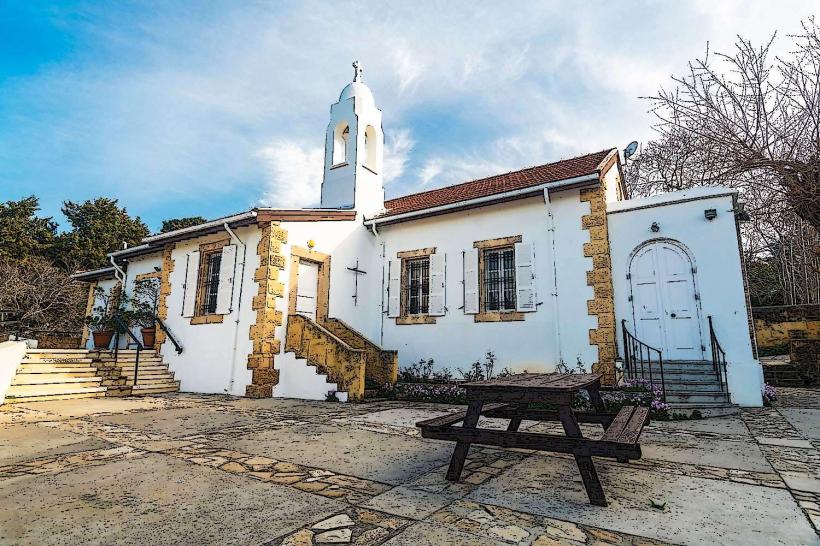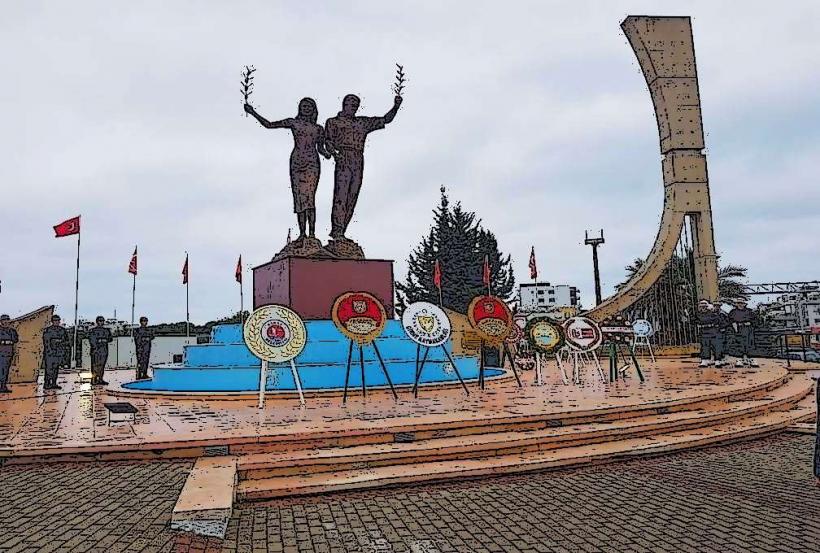Information
City: KyreniaCountry: Cyprus
Continent: Europe
Kyrenia (known as Girne in Turkish) is a port city located on the northern coast of Cyprus, within the Turkish-controlled area of the island. It is one of the most picturesque and historically significant cities in Northern Cyprus, known for its stunning harbor, medieval castle, and rich cultural heritage. Kyrenia offers a unique mix of ancient ruins, Ottoman-era architecture, and modern tourist attractions, making it a popular destination for both history enthusiasts and beach lovers.
1. Geography and Location:
- Kyrenia lies along the northern coastline of Cyprus, nestled between the Besparmak Mountains to the south and the Mediterranean Sea to the north. It is approximately 40 km west of Famagusta and 80 km east of Nicosia, making it easily accessible from other major cities in Cyprus.
- The city enjoys a Mediterranean climate, with mild winters and hot, dry summers, making it a year-round destination for visitors seeking sunshine, beaches, and outdoor activities.
2. History:
- Ancient Kyrenia (Greek: Keryneia) has a rich history that dates back to ancient times. It was founded by the Mycenaeans in the 10th century BCE and became an important city-state in antiquity. The city was known for its strategic harbor, which made it a significant trading and naval center.
- The city’s importance continued through various periods of Greek, Roman, and Byzantine rule. During the Hellenistic period, Kyrenia became a regional port and military base.
- The Venetians took control of the city in the 16th century, and it was later incorporated into the Ottoman Empire in the 19th century.
- Following the Turkish invasion of Cyprus in 1974, Kyrenia became part of the Turkish Republic of Northern Cyprus (TRNC), which is only recognized by Turkey.
- Today, Kyrenia is a major tourist destination and the administrative capital of the Kyrenia District in Northern Cyprus.
3. Economy:
- Tourism is one of the primary drivers of the economy in Kyrenia. The city is known for its historic sites, scenic harbor, and beaches, drawing visitors from around the world.
- Agriculture also plays a role in the economy, with the surrounding region producing fruits, vegetables, grapes, and citrus fruits. Additionally, wine production is an important industry, with local vineyards contributing to the island’s wine heritage.
- The port of Kyrenia remains a key economic asset, especially for maritime trade with Turkey. The city’s commercial activities are also bolstered by its status as a regional administrative and cultural hub.
4. Urban Structure:
- Kyrenia's old town is a charming blend of medieval architecture, Ottoman influences, and modern developments. The city is built around its iconic harbor, which is lined with cafes, restaurants, and shops offering picturesque views of the sea.
- The Kyrenia Castle (also known as the Kyrenia Fortress) dominates the city's skyline and is one of the most famous landmarks in Cyprus. The castle is surrounded by narrow, cobblestone streets that lead to traditional houses, churches, and mosques.
- The modern city of Kyrenia extends beyond the old town, with new residential and commercial developments, hotels, and tourist facilities. However, the historic center remains the focal point of the city's cultural and social life.
- The harbor is the heart of the city, where visitors can enjoy leisurely walks along the promenade, take boat trips, and explore the fishing boats and yachts docked at the quayside.
5. Cultural and Social Life:
- Kyrenia is a city with a rich cultural heritage, where Greek Cypriot, Turkish Cypriot, and Ottoman influences blend together. The old town is home to several important cultural sites, including churches, mosques, and traditional Turkish houses.
- The Kyrenia Castle, built by the Byzantines in the 7th century and expanded by the Venetians, is a central landmark in the city. Inside the castle is the Shipwreck Museum, which houses the remains of a 4th-century BCE Greek merchant ship, offering fascinating insights into ancient seafaring.
- The Bellapais Abbey, located just outside Kyrenia, is another important cultural site. The Gothic-style abbey was built in the 13th century by the Franciscans and is now a popular venue for cultural events and concerts.
- The Kyrenia Municipal Museum and the Folk Art Museum showcase local history, crafts, and traditional Cypriot life, while the Kyrenia International Film Festival is one of the city’s most important cultural events, attracting filmmakers from around the world.
- The harbor area is lively in the evenings, with locals and tourists enjoying the vibrant atmosphere at the cafes, restaurants, and bars. The nightlife in Kyrenia is relaxed but lively, especially during the summer months.
6. Tourism:
- Kyrenia is one of the most visited destinations in Northern Cyprus, offering a mix of ancient history, natural beauty, and modern amenities.
- Kyrenia Castle is the most popular tourist attraction, providing sweeping views of the city and the harbor. The Shipwreck Museum inside the castle is a must-visit for history enthusiasts.
- The Harbor of Kyrenia is another key attraction, offering a beautiful setting for dining and shopping. Tourists can take boat trips around the bay or rent a yacht for a more private experience.
- Bellapais Abbey is a stunning example of Gothic architecture and is often visited for its peaceful surroundings and historical significance.
- Visitors can also explore the nearby St. Hilarion Castle, a fairytale-like medieval fortress perched on the mountainside, which offers panoramic views of the city and coast.
- Beaches around Kyrenia, such as Escape Beach, Alagadi Beach, and Kervansaray Beach, attract tourists seeking sun, sand, and sea. These beaches are ideal for swimming, water sports, and relaxation.
- Kyrenia is also a gateway to the Besparmak Mountains, offering hiking, nature walks, and breathtaking views of the surrounding countryside.
7. Environmental Features:
- The natural surroundings of Kyrenia are one of the city's major attractions. The Besparmak Mountains, also known as the Five Finger Mountains, create a dramatic backdrop to the city and offer hiking trails through pine forests, olive groves, and wildflower meadows.
- The region around Kyrenia is known for its biodiversity, with a variety of wildlife, including wild boars, goats, and numerous species of birds, making it a popular destination for nature lovers.
- The Kyrenia coast is dotted with several scenic beaches, many of which have clean waters, and are ideal for swimming, sunbathing, and water activities.
8. Transportation:
- Kyrenia is accessible by road from Nicosia and Famagusta, with regular bus services connecting the city to other major towns in Northern Cyprus. The city’s location along the coastline makes it easily reachable by car or private transport.
- While Kyrenia does not have its own airport, Ercan International Airport (located about 40 minutes away in Nicosia) is the nearest airport for international flights. Alternatively, visitors can fly into airports in Southern Cyprus and cross the Green Line into Northern Cyprus (subject to border regulations).
- Local buses and taxis are available for getting around the city, though renting a car or scooter is a popular option for those looking to explore the surrounding areas.
9. Challenges and Future Outlook:
- Kyrenia faces challenges due to the ongoing political division of Cyprus. The city is under the control of the Turkish Republic of Northern Cyprus (TRNC), which is only recognized by Turkey, leading to limited international recognition and access.
- Despite these challenges, Kyrenia remains a thriving tourist hub, with a steady flow of visitors from Turkey and abroad. The city continues to modernize while preserving its historical landmarks and cultural heritage.
- In the future, Kyrenia’s tourism industry is expected to grow, with more investments in luxury hotels, restaurants, and cultural events, positioning the city as one of the top destinations in Northern Cyprus.
Conclusion:
Kyrenia is a captivating city with a unique blend of history, culture, and natural beauty. From its medieval castle and harbor to the stunning landscapes of the Besparmak Mountains, the city offers something for every type of traveler. While it remains part of the politically divided region of Cyprus, Kyrenia continues to thrive as a major tourist destination, attracting visitors with its rich history, picturesque setting, and Mediterranean charm.

